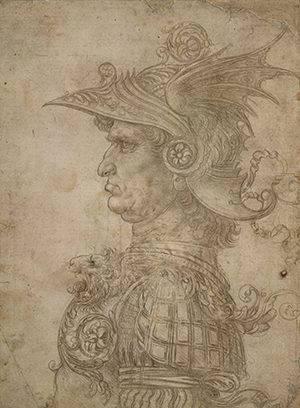In about 1433 Antonio di Puccio Pisano, otherwise known as Pisanello, drew three neatly coiffed courtiers showing off the latest trends in early Renaissance men’s wear. They strut and pose in fur-trimmed thigh-length gowns with extravagantly flared sleeves, each outfit topped by an extravagantly large and floppy hat. With their slender legs and delicate claw-like hands, these dedicated followers of fashion resemble nothing so much as large preening birds, although to judge by the earnest and unsmiling face of the man in the middle they have succesfully cultivated an ostrich-like obliviousness to their own absurdity. Pisanello studied them as if they were exotic specimens – which, to him, they were. He was a court artist in Ferrara and they were travellers from the distant north, members most probably of the retinue of the Holy Roman Emperor Sigismund.
A year or so later the same artist made a study of another, rather different form of human spectacle. This time he drew the bodies of several hanged men dangling from the noose at a variety of sickeningly dislocated angles. The most vividly realised of them is shown from the front and the side. In profile, his mouth is still stretched in the last gasp of death, making him look disconcertingly like a man opening wide for his dentist. Seen straight on, it becomes vilely apparent that the man must have been executed several days if not weeks earlier. The birds have had his eyes, while the skin on his scrawny legs has begun to decompose and rot away, flesh melting from the bone. Near the bottom of the same sheet, the artist has drawn a woman in profile and a boy with curly hair and staring, haunted eyes. He gazes out, seemingly at the viewer, but the expression on his face...


